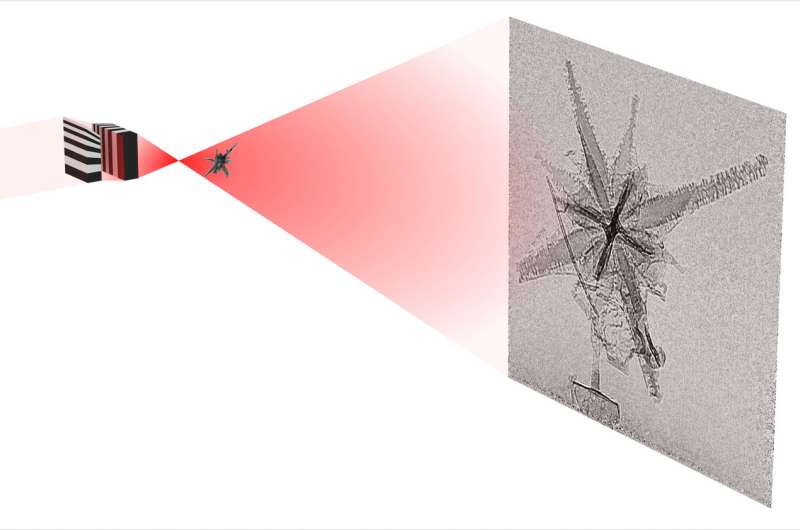Sharpening the X-ray view of the nanocosm

A novel lens offers scientists the sharpest X-ray images yet from the nano world. The device is made from alternating layers of tungsten carbide and silicon carbide and can focus hard X-rays into a spot of less than ten nanometers in diameter. The study, led by Saša Bajt from the German research center Deutsches Elektronen-Synchrotron DESY, is reported in Light: Science and Applications.
The short wavelength and the penetrating nature of X-rays are ideal for the microscopic investigation of complex materials. For example, nanometer resolution X-ray images provide better understanding of structure and function of materials, which is critical for the development of new materials with improved properties. This requires bright X-ray sources but also highly efficient and almost perfect x-ray optics. To acquire images, the X-rays must be focused : as in a light microscope. This is not easy as high energy X-rays penetrate most materials unimpeded and cannot be significantly manipulated with conventional lenses. The multilayer Laue lens overcomes this problem. This device is basically a synthetic nanostructure that diffracts X-rays much like a crystal. If shaped the right way, the incident X-rays can all be concentrated in a very small focus.
The synthetic nanostructures are prepared by magnetron sputtering. We introduced a new pair of materials, tungsten carbide and silicon carbide, to prepare layered structures with smooth and sharp interfaces and with no material phase transitions that hampered the manufacture of previous lenses. Equally important is the control of the layer thickness and shape with atom-scale precision, explains Bajt.
The sub-nanometer control of layer thickness gained through sputter deposition is considerably better than obtainable in a lithography process , a process used to prepare lithographic zone plates commonly used in x-ray microscopes operating at lower X-ray energies. The high aspect ratio (smallest layer thickness vs. optical lens thickness) of the deposited layers makes for very efficient x-ray focusing, which is critical for fast imaging. The paper presents different characterization methods and ways to reduce remaining lens imperfections. The team is convinced that creating lenses approaching a single nanometer resolution is possible.
More information: Saša Bajt et al, X-ray focusing with efficient high-NA multilayer Laue lenses, Light: Science & Applications (2018). DOI: 10.1038/lsa.2017.162
Journal information: Light: Science & Applications
Provided by Changchun Institute of Optics, Fine Mechanics and Physics




















